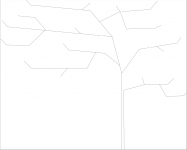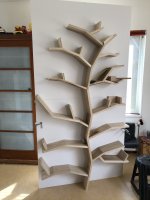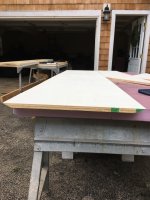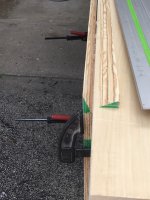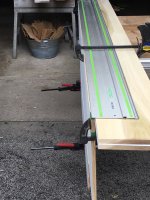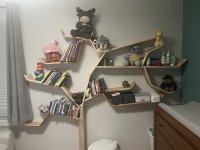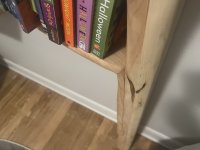boasist
Member
Hello all,
Take a look at the attachment, and you'll see my project layout. The picture is cut off at the bottom to show me only the top angle and measurements. I'm looking for some knowledge on getting these angles out of my shop.
I use my track saw, dashboard cutting table, and various guide rails. The stock is all ambrosia maple that I have squared off on one side to attach to the wall, the other side is raw which I'll be leaving that way and shaping with the kutzall discs once complete. I'll probably domino each "branch/joint" along with some glue for support.
I need the expertise here to help wrap my mind around making these angles on a track saw. I can't stand the wood up and cut obviously so it all must be made laying down.
Thank you.
Take a look at the attachment, and you'll see my project layout. The picture is cut off at the bottom to show me only the top angle and measurements. I'm looking for some knowledge on getting these angles out of my shop.
I use my track saw, dashboard cutting table, and various guide rails. The stock is all ambrosia maple that I have squared off on one side to attach to the wall, the other side is raw which I'll be leaving that way and shaping with the kutzall discs once complete. I'll probably domino each "branch/joint" along with some glue for support.
I need the expertise here to help wrap my mind around making these angles on a track saw. I can't stand the wood up and cut obviously so it all must be made laying down.
Thank you.


